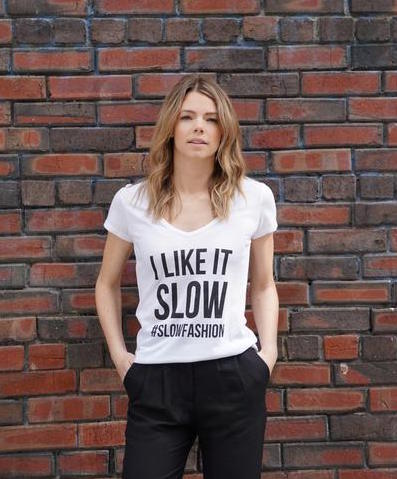One of the most intimidating aspects of trying to promote Slow Fashion is society's blind loyalty to Fast Fashion. In fact, few people are even aware of what the term "Fast Fashion" means, and why it is a problem. Fortunately, Fashion Revolution has been working on this for the past few years, and we have tried to participate in those efforts through different awareness and fundraising events leading up to Fashion Revolution Week.
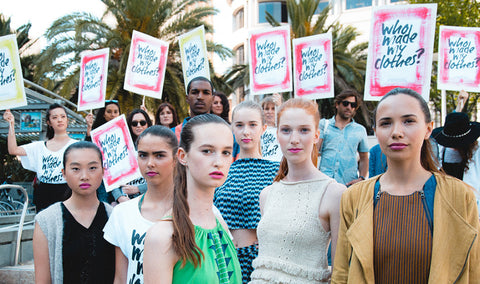
This year, we'd like to get the conversation started again by turning a few heads, with the "I Like It Slow #SlowFashion" Tee. Although it could be considered provocative by some, we hope that it will be the catalyst to stir up the conversation about a topic that can otherwise come off as "preachy". There was a time when people rolled their eyes at consumers seeking organic produce, and now it seems like an obvious choice. We look forward to the same type of momentum in Fashion. So let's start by diving into these buzz words.
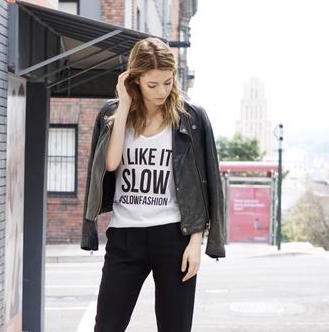
What is Fast Fashion?
Fast Fashion refers to fashion retailers whose business models depend on pushing trends on a monthly and even weekly basis to sell large quantities of clothing at a low price (and low quality). Once upon a time, the fashion industry released new goods for Spring/Summer and Autumn/Winter. Now Fast Fashion retailers depend on making last month's trend feel dated, to keep consumers craving the next new trend. This encourages purchases of clothing that may only be worn once, if at all, with the inexpensive prices causing consumers to think of clothing as a disposable good.

This perceived low value is at odds with the amount of efforts and resources that actually go into each garment. The way that companies achieve these low costs is by cutting corners on quality, labor costs, environmental and safety standards. Chemical dyes are poured directly into river systems, cheap synthetic textiles end up in landfills, and thousands of people literally die due to blatant disregard for safety hazards. The most devastating tragedy was the Rana Plaza garment factory collapse, which led to Fashion Revolution Day, memorializing the incident which killed over 1,100 workers, and injured 2,400 more.
What is Slow Fashion?
The term Slow Fashion, in turn, refers to the opposite of "disposable" fashion. It's a shift of mindset to once again see clothing as something of value, an investment piece which can be enjoyed, cared for, and cherished for years. It is a deliberate choice by consumers to buy less often, investing in higher quality items. Garments are ethically and environmentally conscious, rather than trend-driven, versatile and durable, rather than disposable. Most importantly, slow fashion offers transparency about the materials and the way in which the garments were made, providing even more of a reason to appreciate their true value.
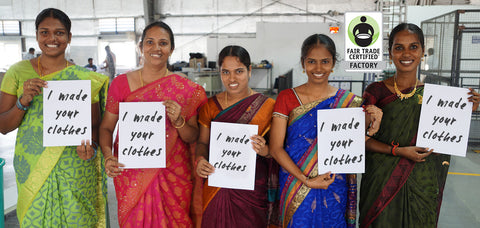
Why should I care?
Slow Fashion has many benefits, like providing living wages in safe work environments for people in the US and abroad. It reduces the carbon footprint of each item of clothing through the use of more sustainable fibers, natural dyes, closed-loop production. The use of natural fibers and dyes also means that as you wear and eventually dispose of your clothing, you are not polluting water with chemicals from fibers and dyes, and your garments will eventually decompose.
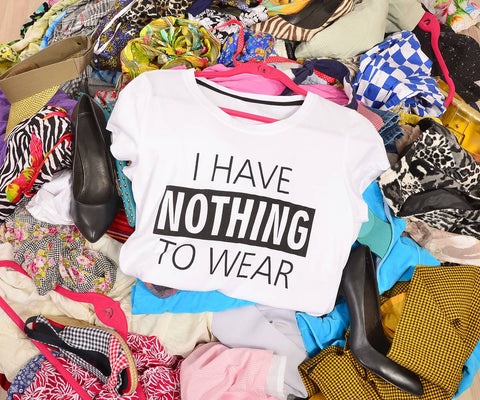
Slow Fashion can even solve the common problem of "closet full of clothes and nothing to wear", which is the direct result of trend-driven consumption. A Cambridge University study reported that women today have four times as many clothes in their wardrobe than they did in 1980. And yet, we often find ourselves drowning in clothing that seems ragged, dated or inadequate. Investing in quality pieces forces consumers to question the true value of a garment, by evaluating how versatile the item really is. It leads to somewhat of a "capsule wardrobe", with a strong base of timeless, modular pieces which can be mixed and matched in endless ways.
In the end, it can simplify your life, and make you feel more connected to your personal style, your environment, your community, and the artisans who crafted your clothing and accessories.
What can I do?
There are endless ways to Get Involved with the movement. But there are also simple things you can do to become a conscious consumer. Over the next few weeks, we will continue sharing tips. We hope that you will feel inspired to learn more from ethical fashion bloggers, or great documentaries like The True Cost and River Blue. And please share with your friends!
If you'd like to join our #SlowFashion Campaign, the "I Like It Slow" Tee is available for order now! All proceeds will be donated to the Natural Resources Defense Council, a non-profit organization working to safeguard the air we breathe, the water we drink, and the places we treasure by lobbying and litigating on environmental issues. Tag us @belvele on Instagram when you wear your tee! We will share our favorites via Instagram stories <3
